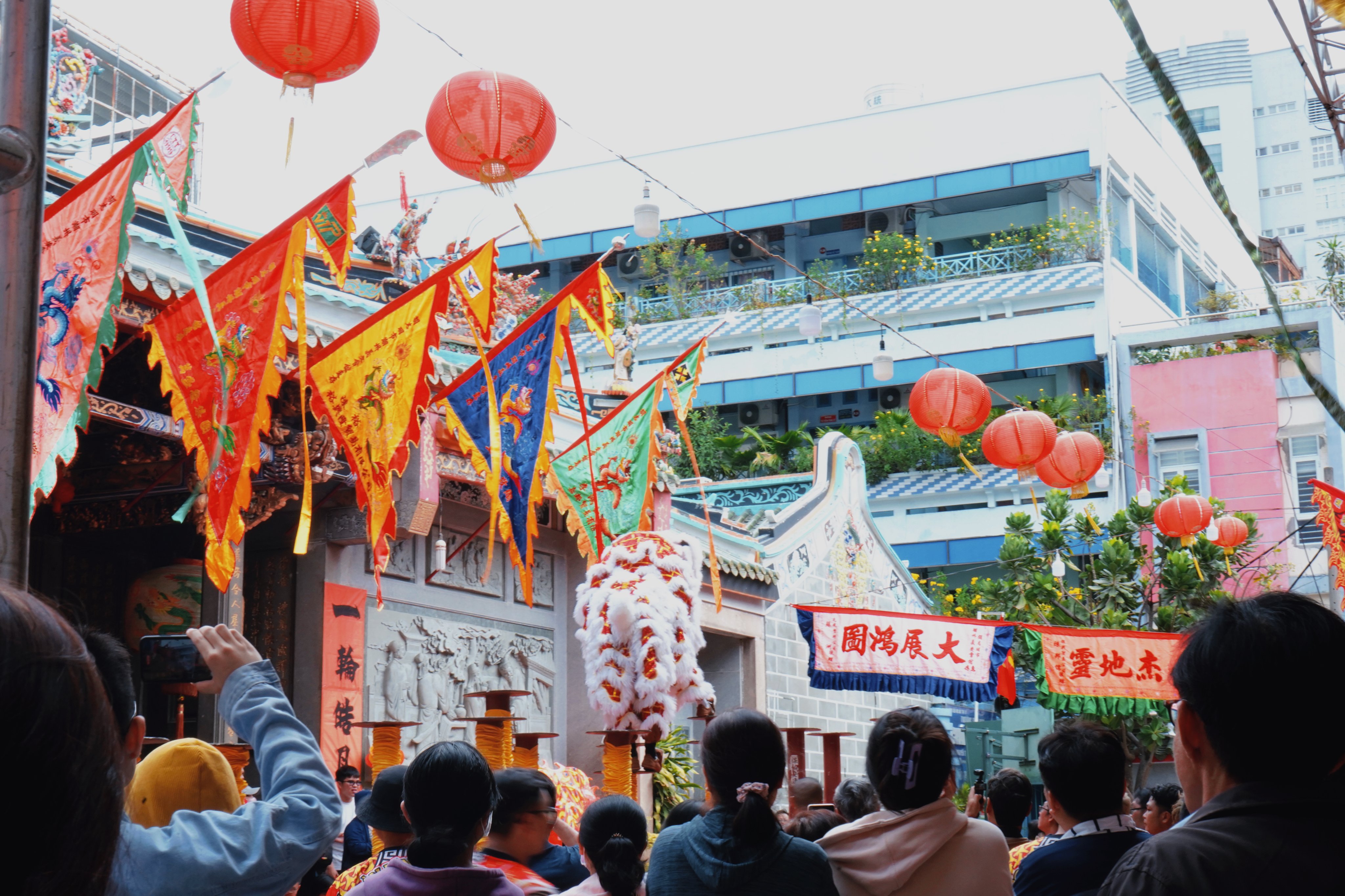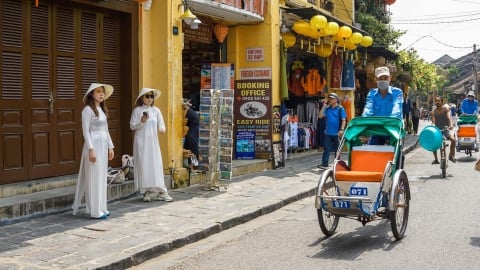The Chinese Lantern Festival in Saigon was recognized by the Ministry of Culture, Sports and Tourism as a National Intangible Cultural Heritage in 2020. This is a testament to the unique cultural value as well as the strong vitality of this festival in the spiritual life of the Chinese community.
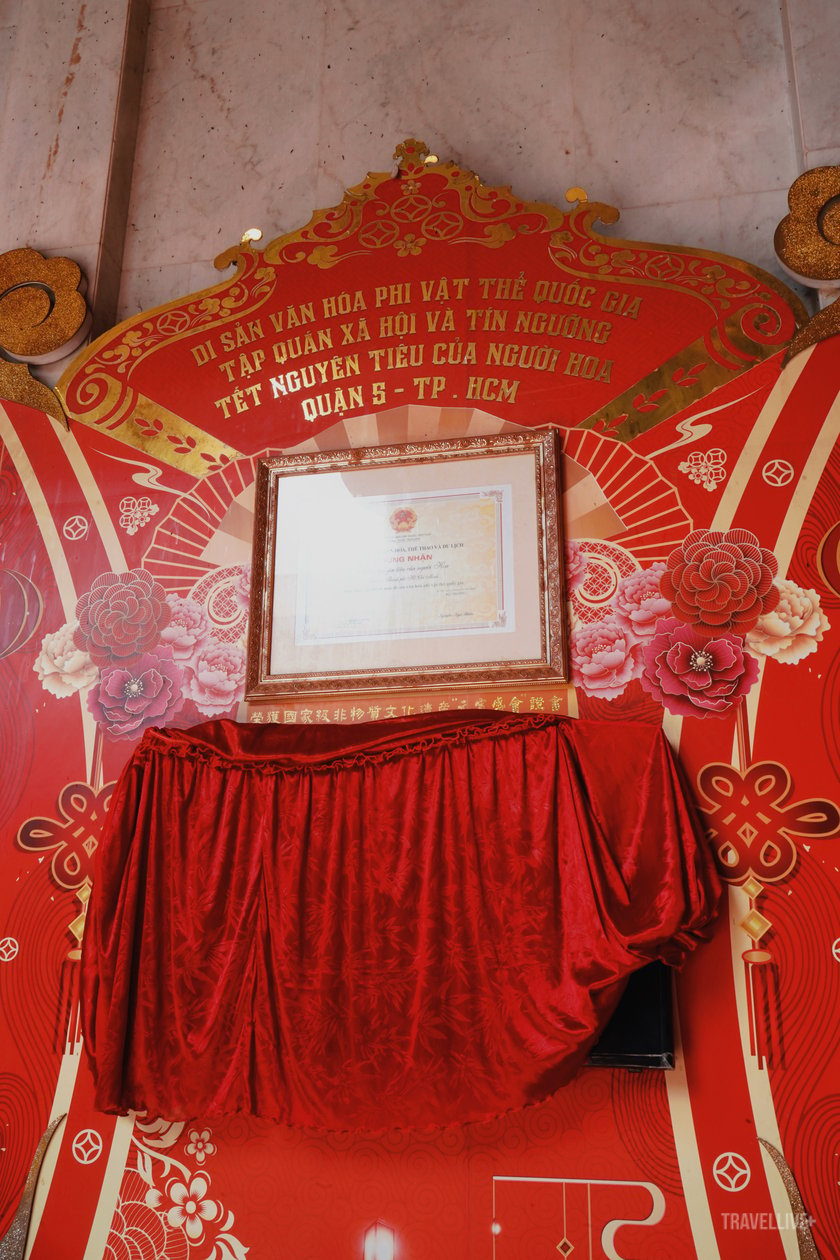
The Chinese Lantern Festival in Saigon was recognized as a National Intangible Cultural Heritage by the Ministry of Culture, Sports and Tourism in 2020.
The brilliant colors of the Lantern Festival
Walking around the Chinese neighborhoods in District 5 during the Lantern Festival, visitors will feel the bustling atmosphere and brilliant colors of the festival. Everywhere is splendidly decorated with red lanterns, golden apricot branches and New Year greetings. The markets are bustling with buyers and sellers with familiar offerings on this day such as roast pork, rice cakes, steamed buns, willow leaf cakes, turtle cakes, sweet rice balls, etc.

A bowl of sweet rice dumplings during the Lantern Festival conveys the wish for peace.
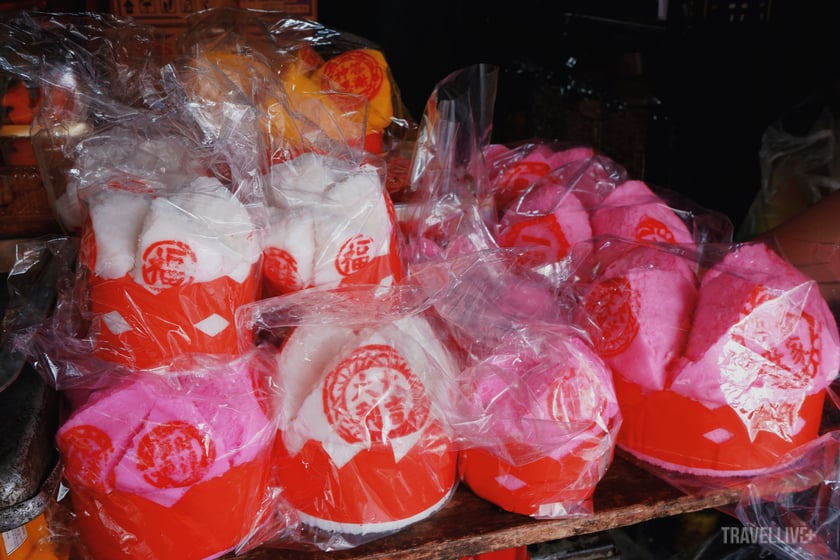
Fortune cake, fortune cake (or cao phat according to Chinese pronunciation) has a spongy texture like hybrid sponge cake or sponge cake.
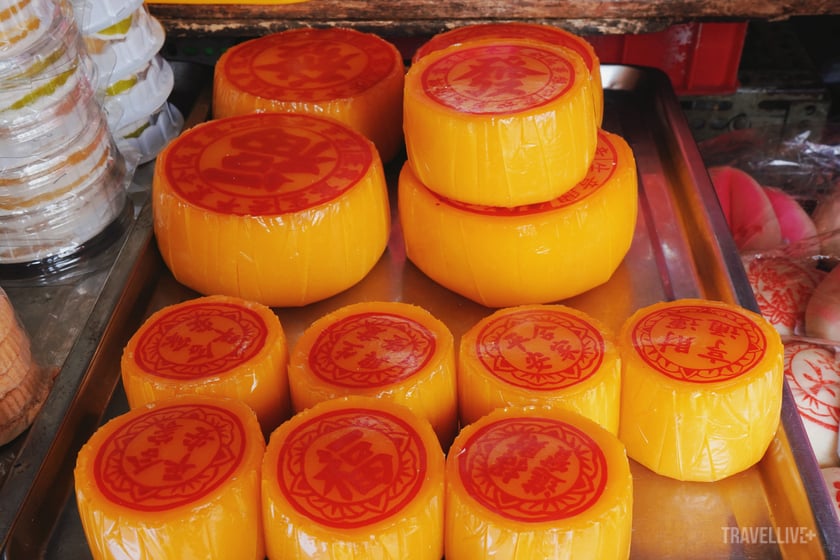
Banh to is a cake made from sticky rice flour, the name "banh to" symbolizes luck and prosperity for the whole year.
Ms. Thai Thi Ngoc Minh (a merchant at Phung Hung market, District 5, Ho Chi Minh City) shared: "Worshiping is an important part of the Chinese Lantern Festival. The offerings are carefully prepared with many dishes to pray for a prosperous and peaceful new year. After worshiping at home, Chinese people will participate in bustling festival activities such as parades."
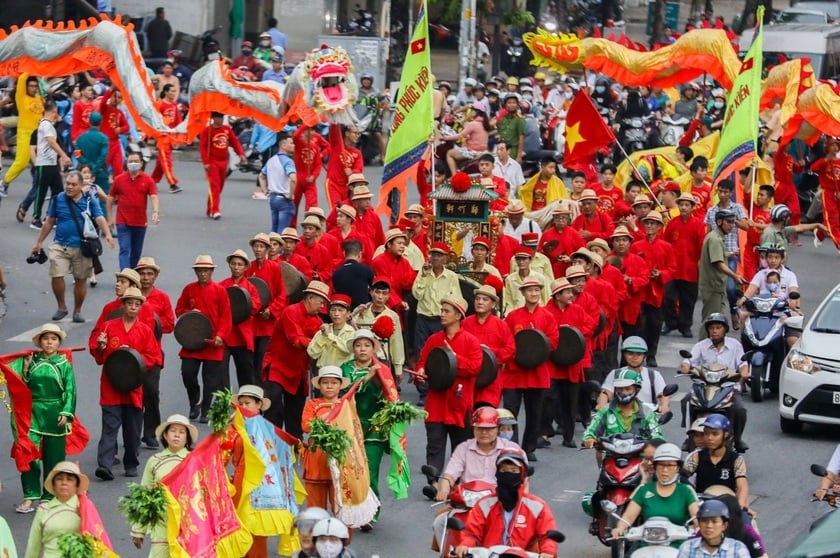
The parade to welcome Quan Thanh De Quan took place on the morning of February 22, 2024 (Photo: Vnexpress)
The Royal Parade to Welcome the King Quan Thanh De Quan took place on the morning of February 22, 2024. This is the main activity within the framework of the 2024 Lantern Festival. The parade with colorful traditional costumes, graceful Lion and Dragon dances, and unique folk dances attracted the attention of many people and tourists. Unique traditional cultural features of the Chinese people such as Peking Opera, Lion and Dragon dances, stilt walking, fan dancing... were displayed throughout the parade.

Many people and tourists enjoy the activities during this Lantern Festival.
Going to the temple to pray for peace - a long-standing tradition of the Chinese
According to Chinese beliefs, “Yuan Xiao” means the first night of the new year. On this occasion, Chinese people often go to pagodas and temples to pray for a year of peace, health, prosperity and wealth. Famous spiritual destinations during the Lantern Festival of the Chinese in Cho Lon include Thien Hau Pagoda, Ong Bon Pagoda, Quang Dong Assembly Hall, Nghia An Assembly Hall...
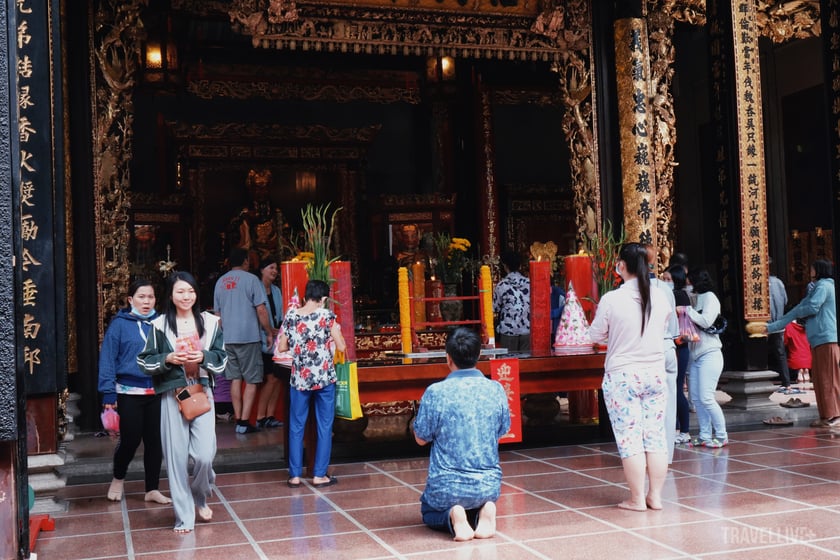
Chinese people have the custom of going to pagodas, temples, and assembly halls on these days to pray for peace and luck.
Taking place mainly at the Assembly Halls in Districts 5, 6 and 11, the main festival on the night of the Full Moon in January attracts a large number of people and tourists to participate. The highlight of the festival is the solemn worship rituals at the Assembly Halls, showing respect to the gods.
"Throughout the Lantern Festival, many people come here to visit, borrow money and ask for blessings. The atmosphere these days is very joyful, everyone prays for a peaceful and prosperous year," said Mr. Loc (Nghia An Assembly Hall Management Board).
In addition, visitors also have the opportunity to enjoy unique traditional opera performances at the Assembly Halls, immersing themselves in the melodious sounds of the ancient Chaozhou Dai La or Fujian ceremonial music.
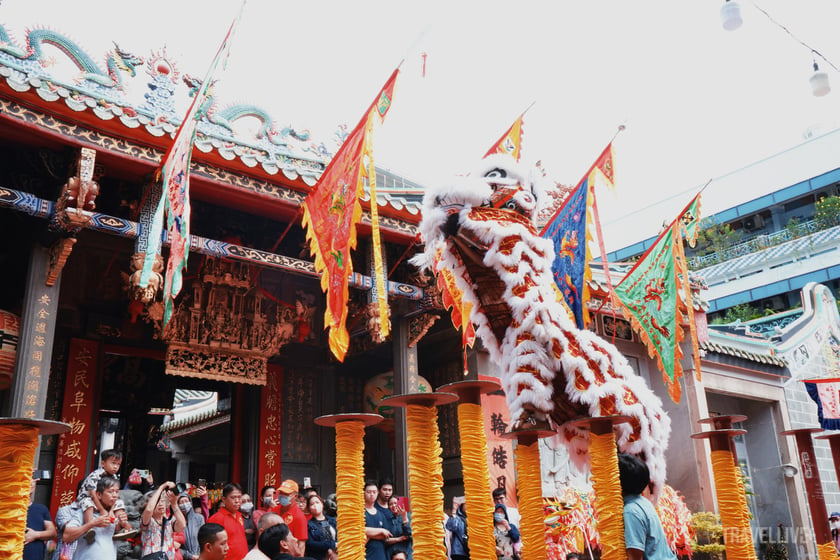
Performing arts, Lion and Dragon dances also take place during the festival days.

Lion and dragon dance troupe of Nghia An Assembly Hall.
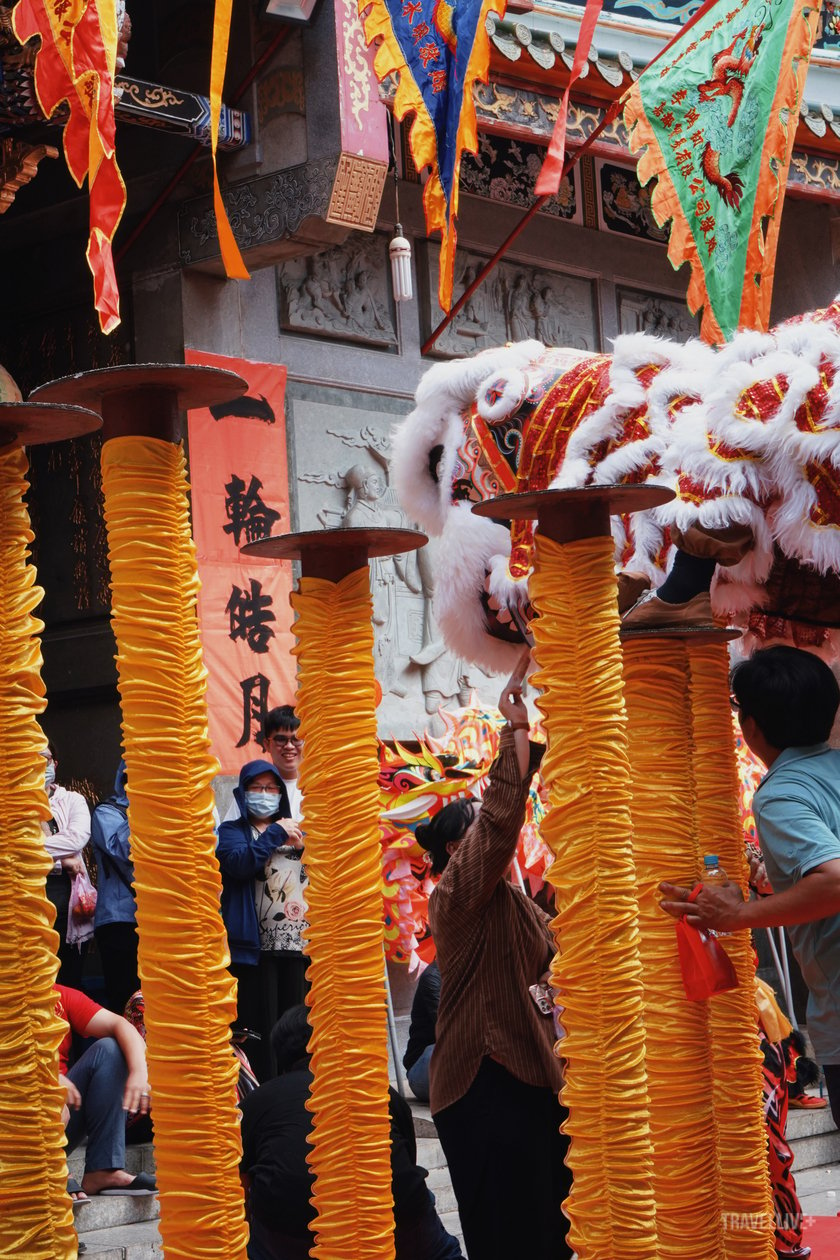
People receive blessings from the lions.
The Chinese Lantern Festival in Saigon is a unique cultural beauty, contributing to enriching the cultural life of the city. This festival is also an attractive tourist destination, attracting a large number of domestic and foreign tourists.





